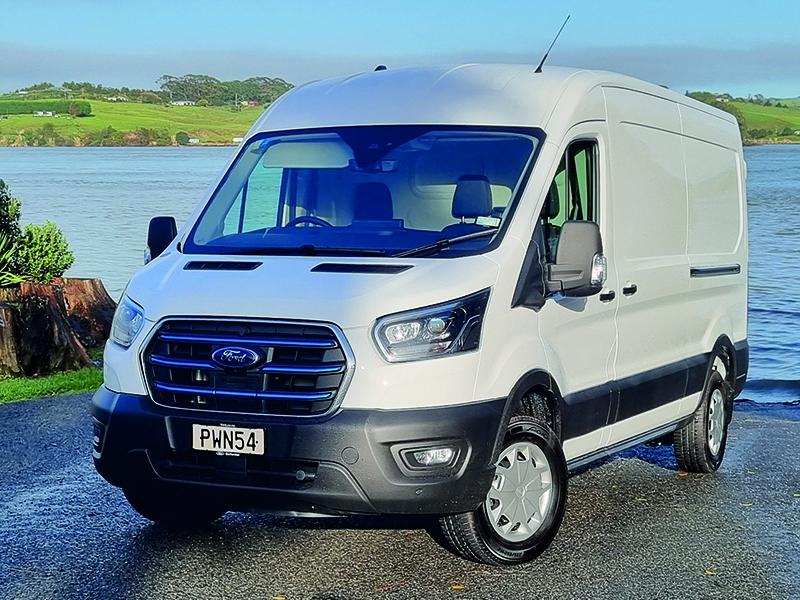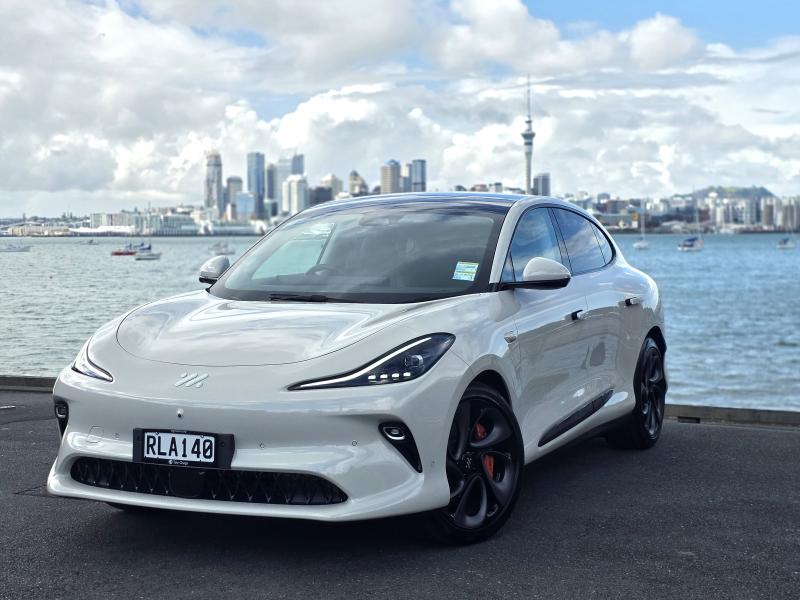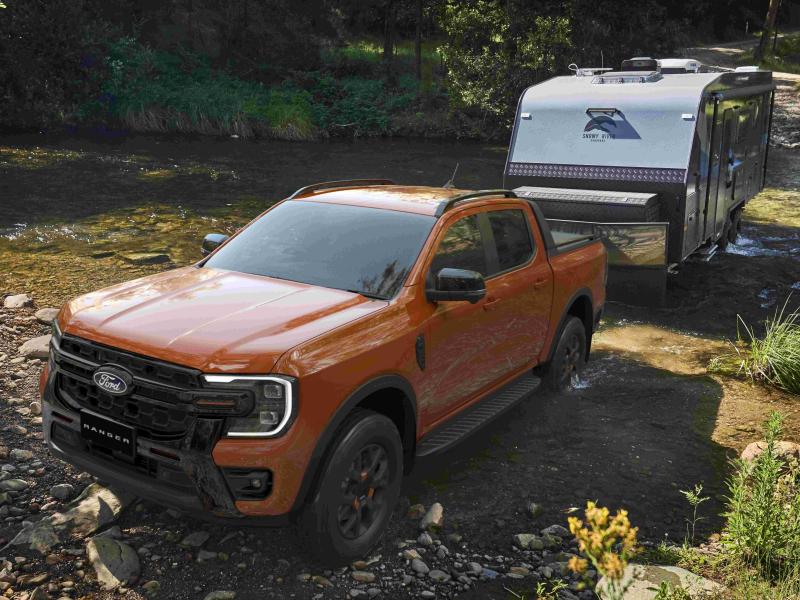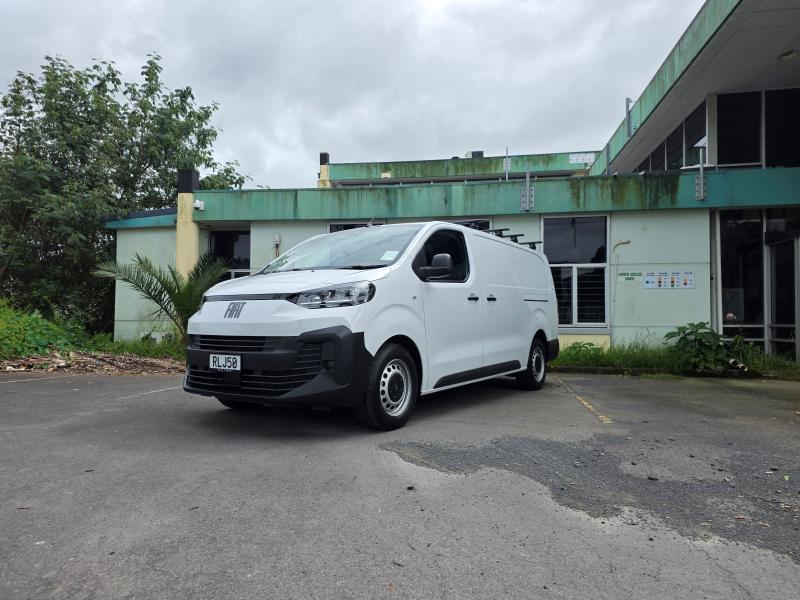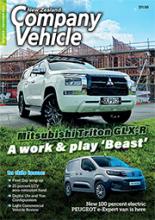Transit is the world’s best-selling cargo van, and it is a van – and a nameplate – that is trusted by 10 million customers over its 55-year history.
Transit is not a vehicle Ford would change lightly or without due care and consideration.
Ford has however, determined EVs are the right direction to take, and the Transit is where it’s really going to happen for the Blue Oval – at least in the commercial vehicle arena and thus we have the arrival of the new, all-electric E-Transit.
As such, E-Transit was subjected to some rigorous testing of both components and complete vans.
Ford NZ has landed the well tested 420L and the slightly smaller 350L with a cab chassis making up the E-Transit line-up so far.
All share the same 68kWh Lithium-Ion battery mounted in a sealed unit mounted below the main cargo area. The battery powers a single electric motor delivering 198kW of power and 430Nm of torque to the rear axle via a single speed transmission.
The 350 has a range of up to 250kms, while the 420 is claimed to run 304kms on a charge, which is apparently a little more than double the average distance a commercial van will travel in a day in Australia, and that would be comparable to ours.
Using the socket access in the front grille, on an 11kW AC charger, its about eight hours, so an overnight charge. On a DC charger at 115kW it takes about half an hour to go from 15 to 80 percent.
Of course, this is supplemented by regenerative braking or coasting, which is optimised using the L button in the rotary e-shifter for the transmission.
The single speed automatic is supplemented by three different drive modes: Eco Mode, which limits the maximum speed, regulating acceleration, and optimises climate control; Normal Mode for everyday driving, balance, and comfort and Slippery Mode, which improves vehicle traction in low-grip road conditions.
Perhaps the most significant internal improvement to the E-Transit is the adoption of Ford’s SYNC4 driver/vehicle integration system. This is accessed via 12-inch glare-resistant touchscreen and delivers enhanced voice control, wireless Smartphone integration, Apple CarPlay and Android Auto, connected built in satellite navigation, cabin temperature pre-conditioning and a digital owner’s manual.
Having said that, the rear vision mirror is perhaps something E-Transit owners are really going to appreciate, especially if they have come out of a conventional Transit.
See, in the E-Transit, it’s not a mirror at all. It is in fact, a spectacularly clear camera screen with the lens mounted at the top of the rear doors. The screen has a dimmer control for clearer night vision.
And speaking of adjustable things, the driver’s seat has 10-way electrically adjustable and electrically heated cloth seat, this last extending to the passenger’s seat as well.
For those who were not aware, the outgoing diesel Transit incorporated a power inverter in the front cabin under the passenger seat.
The E-Transit has not only kept the original inverter, but added a second one, this time in the rear cargo area with easy access via the barn style rear doors and making the E-Transit just that little more practical with the ability to power external devices from the van itself.
FordPass Connect – Ford’s factory embedded modem and vehicle interface system with phone app – has also been retained and its functionality has been increased to factor in some specific features of the E-Transit, including monitoring the battery charge level, distance to empty (km), location of nearby chargers, pre-setting of charging times and departure times and maintaining charging logs.
Underneath the E-Transit is a radical change; the rear leaf suspension of the ICE models has been replaced with an independent rear setup incorporating a heavy duty semi trailing arm to allow for more confident and car like handling as well as better traction in laden and unladen conditions.
The rear suspension of the E-Transit features a compact heavy-duty suspension system for more confident handling, plus better traction in both laden and unladen conditions.
It also allows for an uncompromised cargo capacity of up to a maximum load volume of 11 cubic metres with the standard medium roof height.
As to payload – and the difference between a 350L and a 420L – the 3500kg GVM of the former allows for an 851kg payload, while the 420L’s 4250kg GVM is up to 1601kg.
Both models sit on a 3750mm wheelbase and the load area being the same as the outgoing 350L, many previous fitout solutions will easily apply to the E-Transit for easy integration of the electric van into a business’s ICE fleet.
On this last, the Transit scores well according to ANCAP safety ratings which don’t use the star rating system but rather a Bronze to Platinum score.
MY22 Transits rate as Gold (2nd from the top) but the E-Transit, not tested as yet, has seen upgrades to the systems which kept it from achieving a top-level Platinum status.
With these rectifications and improvements, specifically around lane support systems, the E-Transit ticks all the appropriate safety boxes.
E-Transit is covered by Ford’s five-year, unlimited kilometre New Vehicle Warranty which sits alongside the eight-year or 160,000 km (whichever occurs first) warranty package for the battery and high-voltage electric components.
The E-Transit pricing is at $94,990 for the 350L and $101,990 for the 420L.


